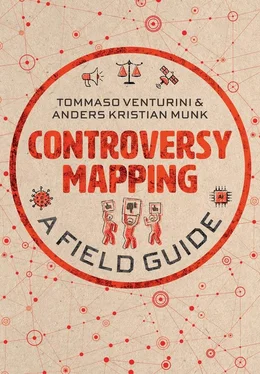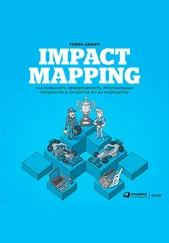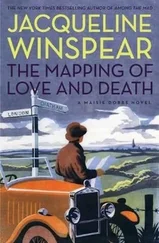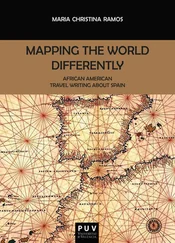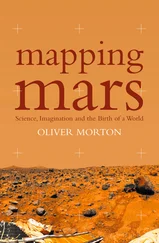Tommaso Venturini - Controversy Mapping
Здесь есть возможность читать онлайн «Tommaso Venturini - Controversy Mapping» — ознакомительный отрывок электронной книги совершенно бесплатно, а после прочтения отрывка купить полную версию. В некоторых случаях можно слушать аудио, скачать через торрент в формате fb2 и присутствует краткое содержание. Жанр: unrecognised, на английском языке. Описание произведения, (предисловие) а так же отзывы посетителей доступны на портале библиотеки ЛибКат.
- Название:Controversy Mapping
- Автор:
- Жанр:
- Год:неизвестен
- ISBN:нет данных
- Рейтинг книги:4 / 5. Голосов: 1
-
Избранное:Добавить в избранное
- Отзывы:
-
Ваша оценка:
- 80
- 1
- 2
- 3
- 4
- 5
Controversy Mapping: краткое содержание, описание и аннотация
Предлагаем к чтению аннотацию, описание, краткое содержание или предисловие (зависит от того, что написал сам автор книги «Controversy Mapping»). Если вы не нашли необходимую информацию о книге — напишите в комментариях, мы постараемся отыскать её.
Controversy Mapping A crucial field guide and hands-on companion for the digital age,
is an indispensable resource for students and scholars of media and communication, as well as activists, journalists, citizens, and decision makers.
Controversy Mapping — читать онлайн ознакомительный отрывок
Ниже представлен текст книги, разбитый по страницам. Система сохранения места последней прочитанной страницы, позволяет с удобством читать онлайн бесплатно книгу «Controversy Mapping», без необходимости каждый раз заново искать на чём Вы остановились. Поставьте закладку, и сможете в любой момент перейти на страницу, на которой закончили чтение.
Интервал:
Закладка:
Querying search engines, and interpreting actor mentions, are not particularly slow methods, but they are not single-click operations either. Their exploitation demands a reflexive attitude, including the many methodological considerations laid out in the chapter on the collection and sorting of digital records. Research browsers are installed, settings are changed, and multiple queries are made as one reconsiders the use of search engines, transforming them from a consumer information appliance into a research device.
We considered the placement of the mentions. This is the study of what is referred to as “source distance.” How far from the top are the mentions? It is also a consideration of the significance of the actors who can be seen to sympathize or align with them.
In order to produce a coarse measure of partisanship among significant actors in an issue space, the search engine is queried, but in two steps, first, for the issue, “climate change.” The second set of queries is made for the names of skeptics or skeptical organizations in each source returned in step one. This is the point where the search engine has been repurposed for research.
We note a source’s affinity toward an actor, but we also would like to draw comparisons between the actors. Who appears to be the most sympathetic? There is a word-clouding technique, where one keeps the order of the sources returned and resizes the actor names according to the number of mentions of the other. One can have clouds (which also could be called maps) that show the results of an analysis of a single actor or a constellation of many, for example, which actors mention a set of skeptics. One can also show the most significant skeptic.
Networks also could be said to have an agenda or a set of commitments. Certain issues may be suffering, others thriving. If one demarcates a network through hyperlink analysis, relying on an authoritative list or surveying actors or funders, one can harvest each actor’s online issue list, merge the lists, and query every actor for every issue (in our repurposed search engine). The resulting “issue cloud,” whether in alphabetical order or arrayed by mention frequency, provides both the network’s overall agenda as well as the distribution of commitment. Are children’s rights doing well within the global human rights issue network? Who’s particularly dedicated to it, and who is much less so? Claimed commitments also may be tested. An organization may have a beefy issue list but pay attention to a few over the others listed.
Third, the maps have effects. As this field guide makes clear from the outset, to be a mapmaker is to assume some form of complicity. Link maps could make actors desirous of others’ sets of inlinks. They may be envious of another actor’s positioning either overall or within a particular cluster. Having viewed the maps, actors might begin to solicit links. They could consider employing the services of a link farm, just as celebrities and others purchase likes or followers to enhance their social media status. Sudden movement around the map could capture actor link optimization, or could be a sign of improved showing, however gained. Mapping becomes temporal, with a series of scheduled snapshots.
But the maps are themselves part of the issue space, certainly when actors incorporate them into their PowerPoint presentations. Just like the geographical maps discussed in the chapter on the representation of controversies, debate maps are not neutral descriptions of a territory, but instruments in the hands of social actors. In one project, working in a data sprint similar to the ones described in this book, we collaborated with FairPhone, the project originated at the Waag Society, Amsterdam, to create a “more sustainable smartphone.” They had a map, or diagram, that shows the stages of life of a smartphone that emphasizes the mining and recovery of minerals. In their presentations they raise awareness of the mineral trade, also discussing “conflict minerals.” They argue that there is scant information available about those raw materials in the various phases of a smartphone’s life from production, sale, and use to recycling. With mineral mention mapping, we annotated their map by adding an awareness layer (see figure 0). It could be inserted into the PowerPoint presentation, after the original stages of life diagram. It empirically hardens the point made by FairPhone, but also indicates some signs of awareness, perhaps from their own dedicated efforts (though we did not test that supposition).
Finally, there are a number of precepts that the mapping of issues and networks with digital methods have followed that are decidedly Latourian (apart from having precepts in the first place): multiply the maps, instead of seeking to make the mother map and have it serve as the endpoint. Multiple map-making is the research that precedes and enables making findings or developing a narrative of the results. Make the maps reversible, so one can follow content or data points back to their origins. These key precepts of “second-degree objectivity” and “datascape navigation” (described in the chapter on representation) were imported from ANT into digital methods. A recent digital methods tool, 4CAT, for collecting and analyzing 4Chan, Reddit, TikTok, Telegram, and Instagram data, not only queries the social media platforms (or archives of them), but also saves each analytical sub-operation per map. In that sense it allows for the deconstruction of the map. The last precept to be mentioned is the retention and study of actor issue language. While the respect for actor accounts is anthropological in its origins (as argued in the chapter about actor-networks), the issue language also serves as queries. A preferred technique, among the many introduced over the years on collecting and sorting digital records, is to compare the resonance (together with its publics) of competing issue languages, also known as programs and antiprograms, which are like campaigns but without the outward campaigning.
While digital methods have learned from ANT and controversy mapping, this book represents a deepening and maturing of the relationship. It also demonstrates the refinement of many of the techniques that were at the heart of the first wave of web research, described above, when issue crawlers and Google scrapers were routinely deployed for mapping. Welcome to the new wave.
Richard Rogers

Figure 0 Mapping the online mentions of rare minerals (created by Richard Rogers and Federica Bardelli).
Introduction
Controversies, it seems, are everywhere in contemporary media. It is impossible to check the news, scroll through one’s social feed, or listen to a podcast without stumbling on some controversial issue.
Sunday, it is the snapshot of a seahorse gripping a cotton-bud in its curvy tail, reigniting the debate about the effects of plastic pollution on marine ecosystems and declining biodiversity. Published by an American photographer and environmental activist, the image goes viral on social media and soon gives rise to all sorts of parodies and memes.
Monday, the havoc caused by a tropical cyclone adds fuel to a discussion about the connection between climate change and extreme weather events. TV and radio shows suddenly take an interest in climatologists who can explain how warmer oceans can lead to increased storm activity. Once on air, the discussion quickly drifts from causes to consequences, as architects and engineers suggest the destruction should be blamed on poor urban planning and not on the weather. They subsequently accuse the government of not fulfilling its commitments to adapt to climate change.
Читать дальшеИнтервал:
Закладка:
Похожие книги на «Controversy Mapping»
Представляем Вашему вниманию похожие книги на «Controversy Mapping» списком для выбора. Мы отобрали схожую по названию и смыслу литературу в надежде предоставить читателям больше вариантов отыскать новые, интересные, ещё непрочитанные произведения.
Обсуждение, отзывы о книге «Controversy Mapping» и просто собственные мнения читателей. Оставьте ваши комментарии, напишите, что Вы думаете о произведении, его смысле или главных героях. Укажите что конкретно понравилось, а что нет, и почему Вы так считаете.
